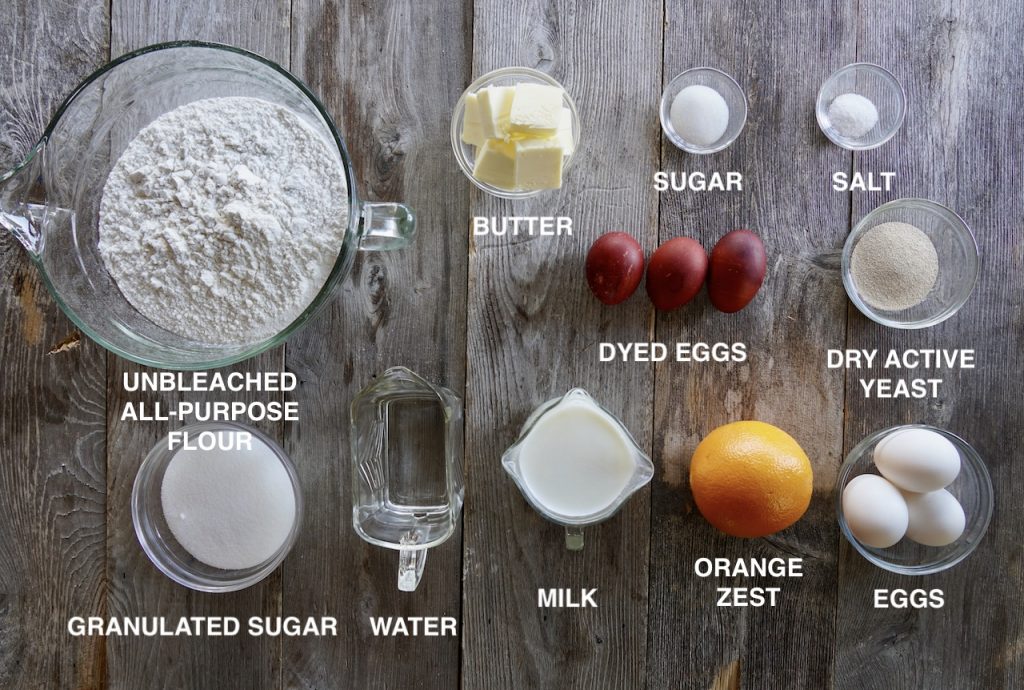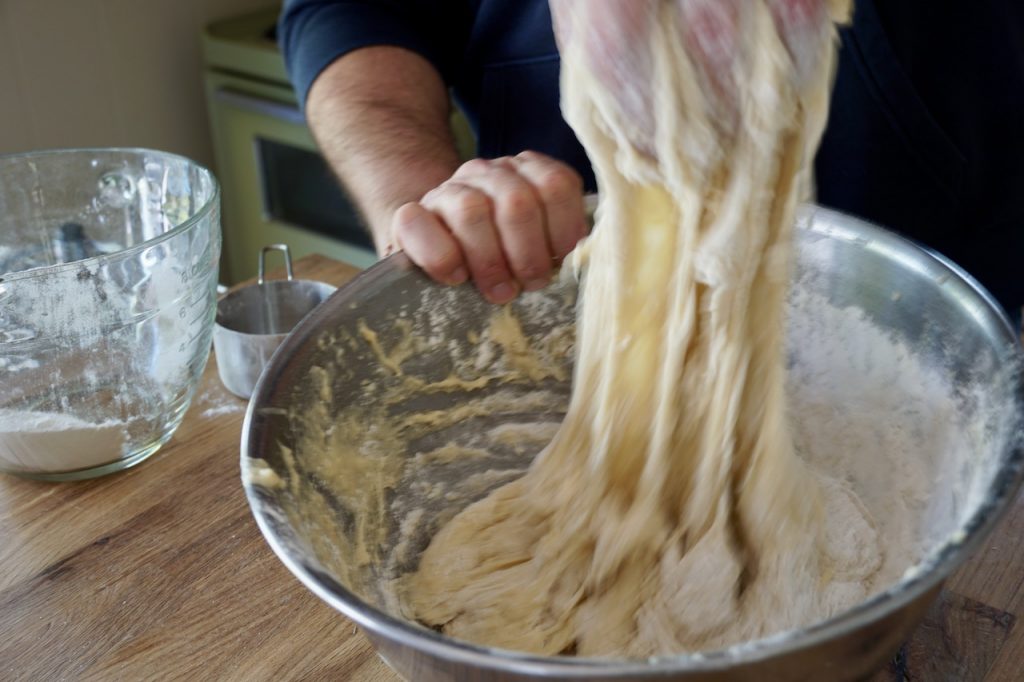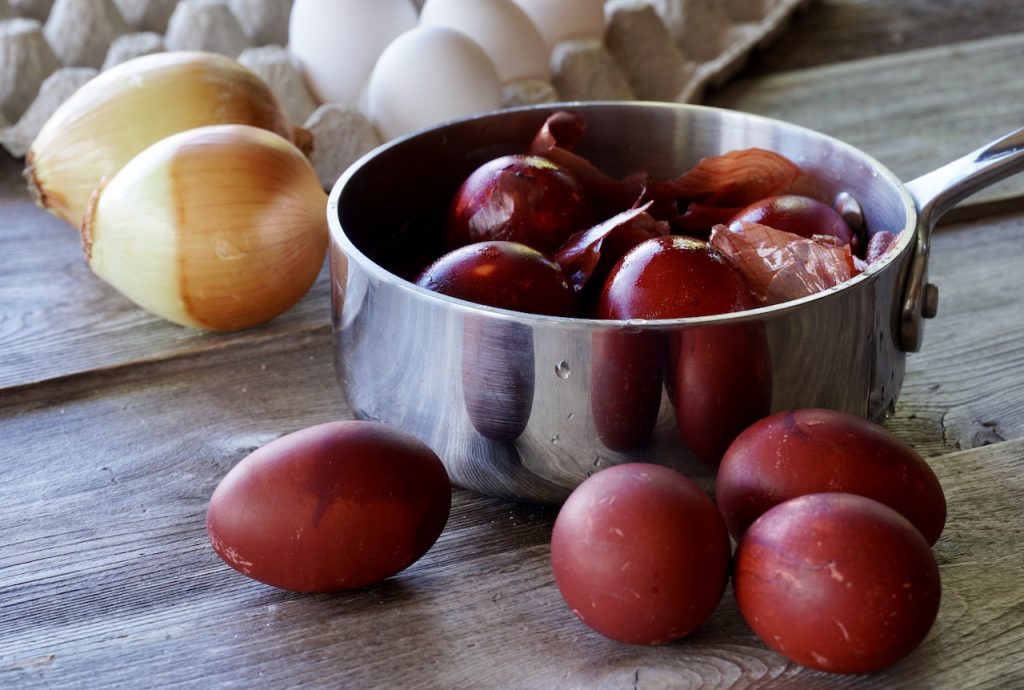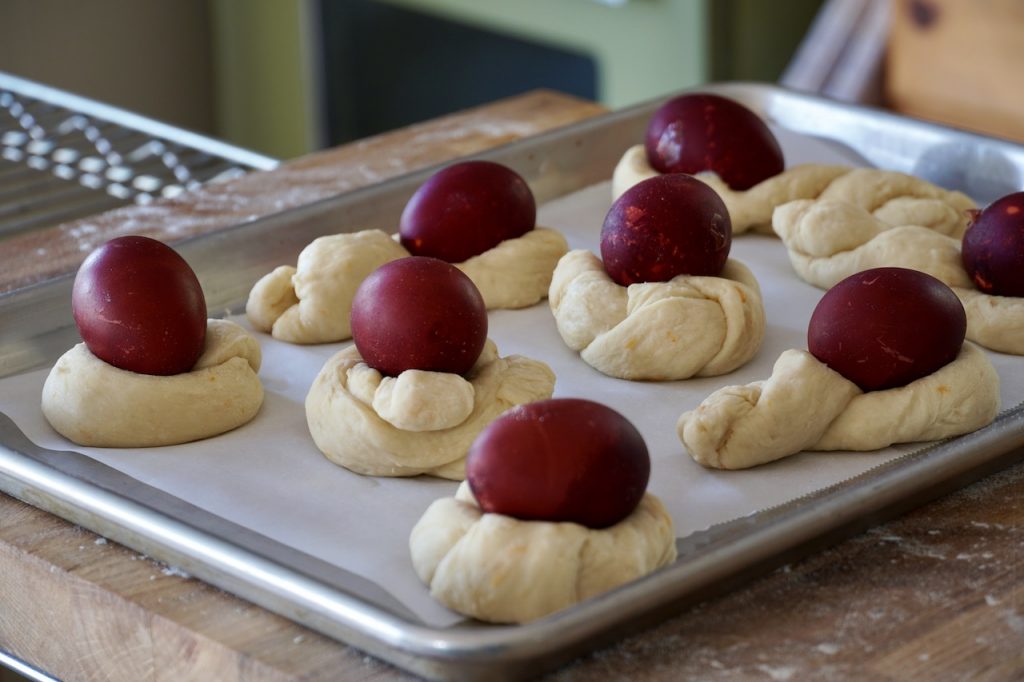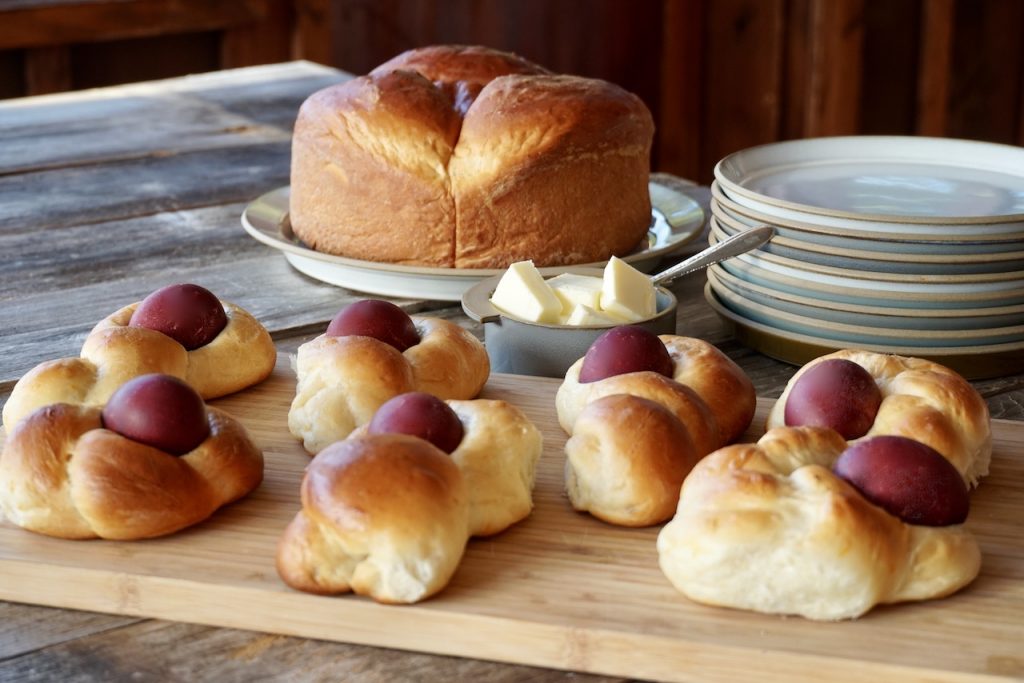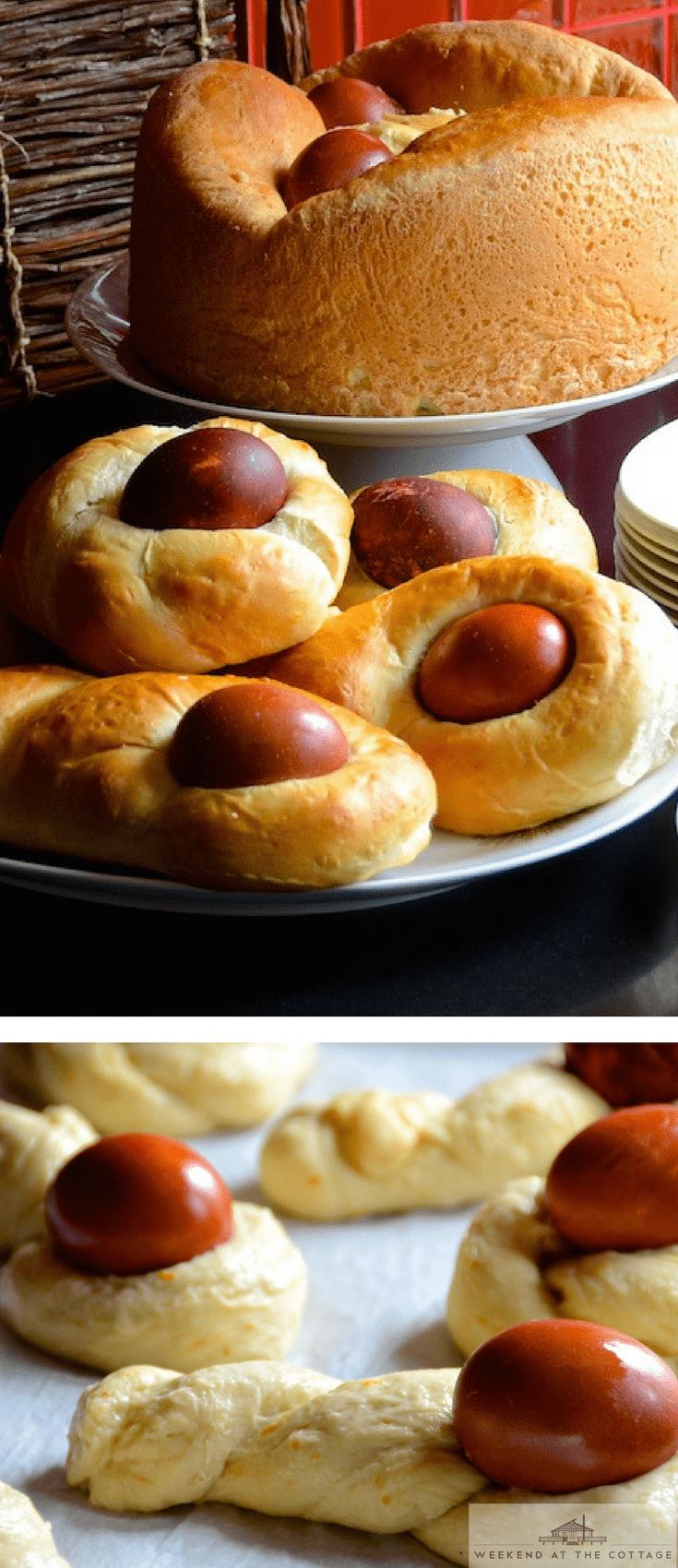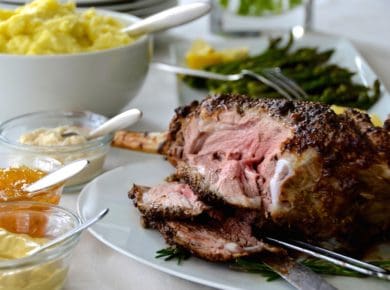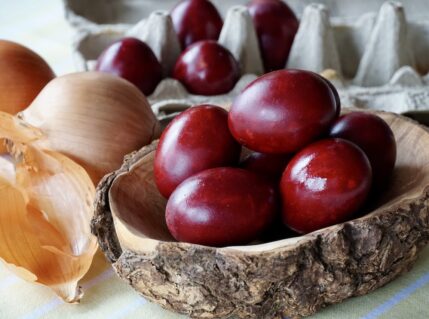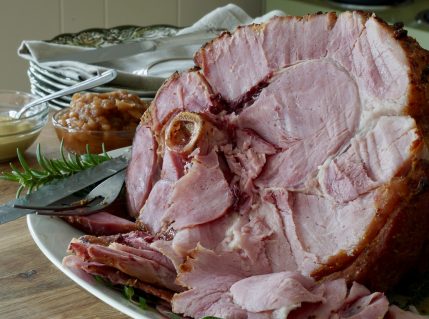Homemade Easter Bread
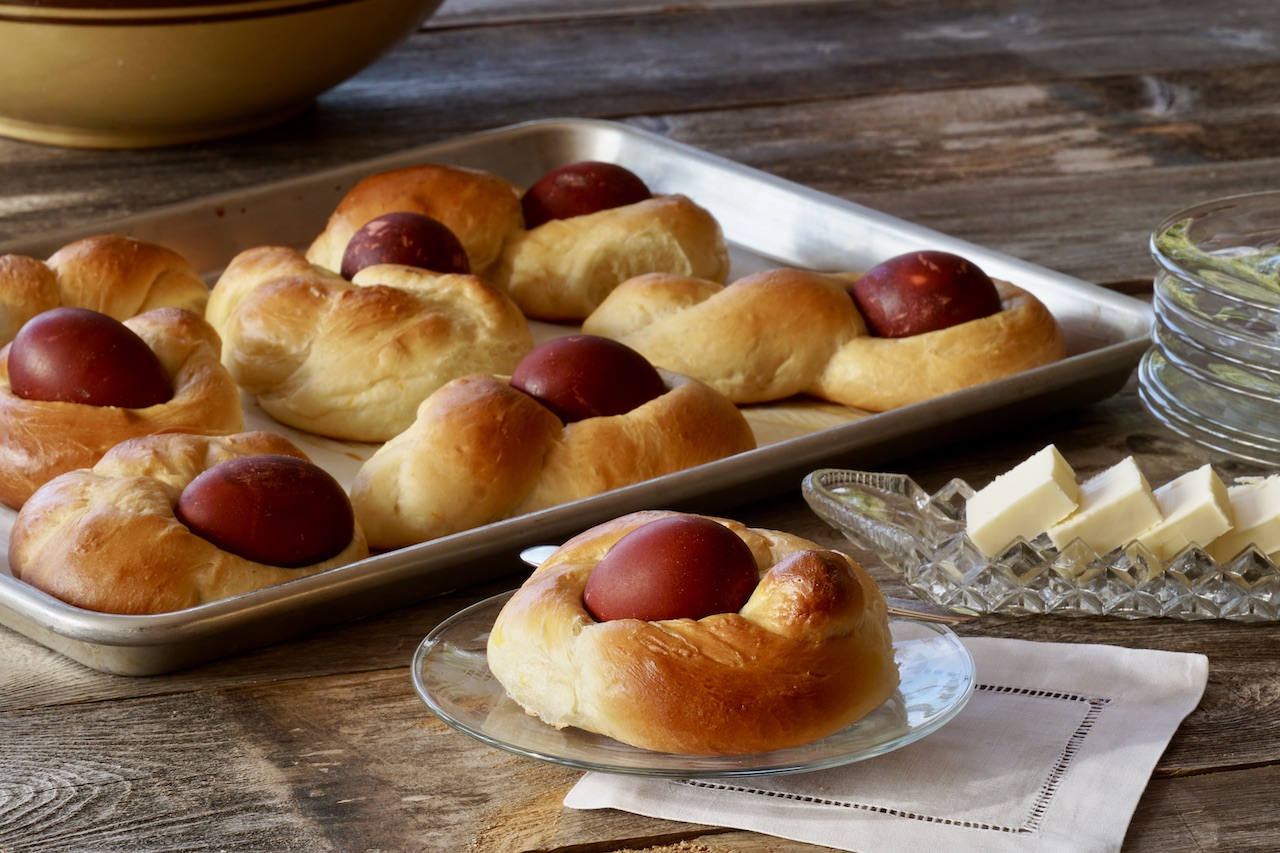
Ingredients
- 1 cup water, lukewarm
- 2 teaspoons granulated sugar
- 2 packages dry active yeast
- 1 cup whole milk
- ¾ of a cup of granulated sugar
- 1 teaspoon kosher salt
- 8 tablespoons butter
- 2 extra large eggs plus 1 yolk, room temperature, lightly beaten
- zest of one navel orange
- 6 cups unbleached all-purpose flour
- egg wash: egg white plus 1 tablespoon of water, whisked together
- butter and flour for pot
- 9 hard boiled eggs, coloured
Takes , serves 12.
Instructions
- Pour the cup of water into a small bowl. Add the 2 teaspoons of sugar and stir to dissolve. Sprinkle yeast into bowl. Cover with a plate and let stand for 10 minutes.
- Pour milk, sugar and salt into a medium saucepan on medium-high heat. Stir to dissolve the sugar and salt. Right before the milk boils, add the butter and stir until melted. Set aside until temperature comes down to lukewarm.
- Pour the lukewarm milk and yeast mixtures into a large bowl and stir together. Add 3 cups of flour and stir until everything is well blended. Add eggs and orange zest and stir until incorporated.
- Begin adding the remaining 3 cups of flour slowly, sprinkling it bit by bit into the dough and working it in with your hand. Pull the dough up and away from the bowl to incorporate the flour. Continue sprinkling all of the flour until the dough comes together.
- Turn the dough out onto a floured surface and knead gently for about 4 minutes. Wash bowl and return it to counter. Transfer the dough back to the bowl. Rub a bit of butter between the palms of your hands and then rub it over the top and sides of the dough as well as along the inside of the bowl. Cover with a clean dish towel and place in a warm location until the dough doubles in size, about 1½ hours.
- Prepare your workspace: Butter and flour the inside of a medium-sized, straight-sided soup pot. Line a baking sheet with parchment paper. Prepare egg wash by whisking egg white together with 1 tablespoon of water and set aside with a pastry brush.
- Turn dough out onto floured surface. Knead gently for a few moments, then divide in two.
- To form kolach: Take one half of the prepared dough and cut into four even-sized pieces. Form each portion into a round, slightly flattened disc. Place one disc into the centre of the pot and then add the remaining three to form the shape of a three-leaf clover. Brush with egg white mixture. Add three coloured eggs onto the dough, cover with a towel and let sit in a warm spot to rise for one hour.
- To form pundje and pletenice: Cut remaining half of dough into six even-sized pieces. Roll each piece into a long rope. For pundje, twist the rope into a bun shape. For pletenice, hold rope in the middle, allowing the ends to hang, and form a twist by wrapping one end around the other. Brush with egg wash and place a coloured egg in the centre of each pundje and in the loop end of each pletenice. Cover with a clean dish towel and let sit in a warm spot to rise for one hour.
- Preheat oven to 325°F with the rack in the lower-third position.
- For large bread (kolach): Place pot in oven to bake for 50-60 minutes or until a cake tester comes away clean. Once baked, allow to cool for about 20 minutes before turning it out of the pot and allowing it to cool completely on a wire rack.
- For buns (pundje and pletenice): Place buns in to bake for 30 minutes, or until golden brown. Once baked, leave them to cool on baking sheet.
- Serve with butter.




